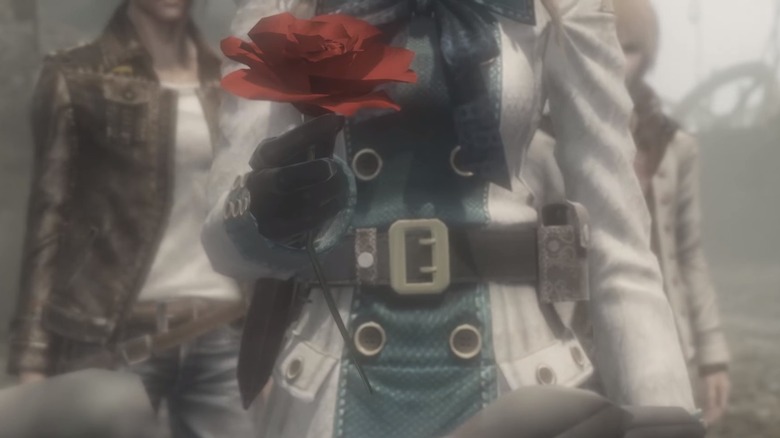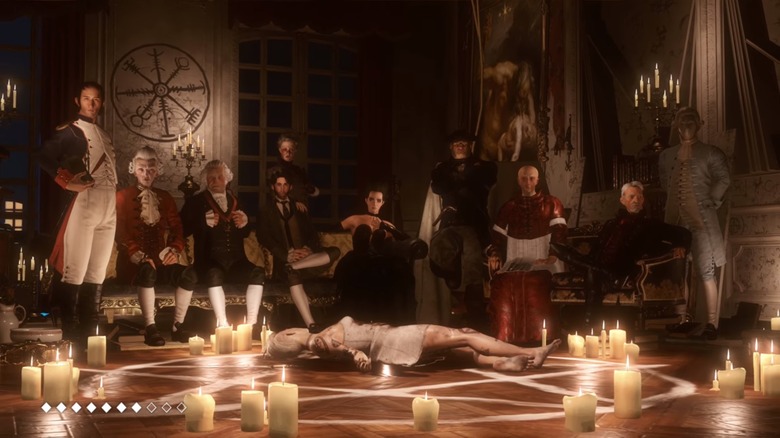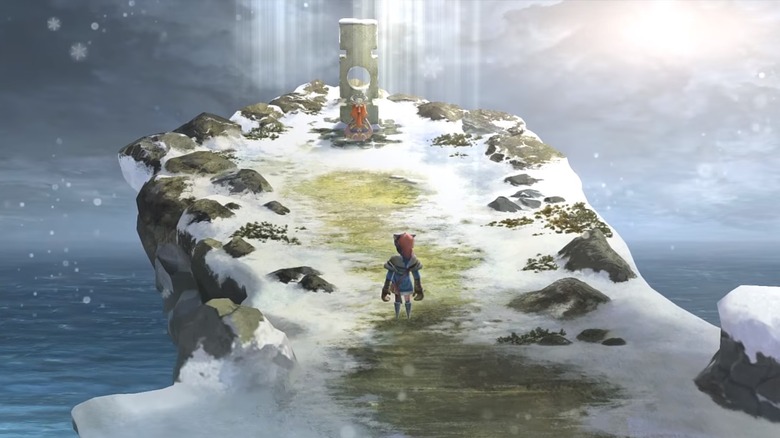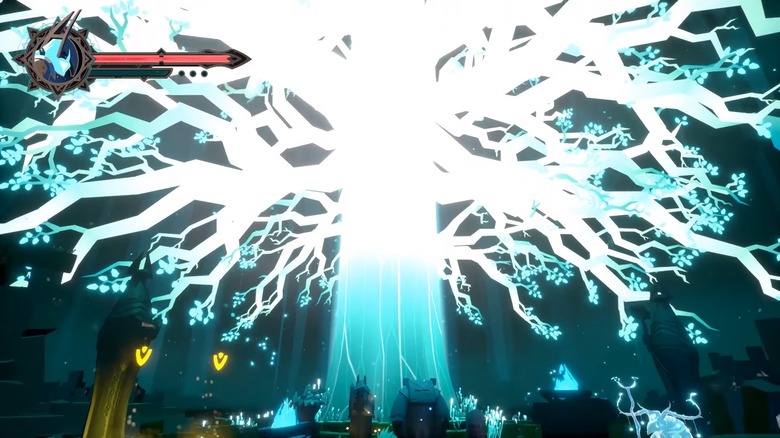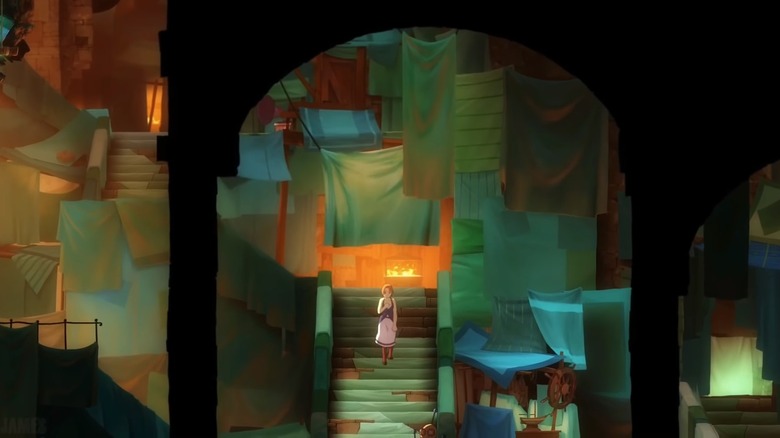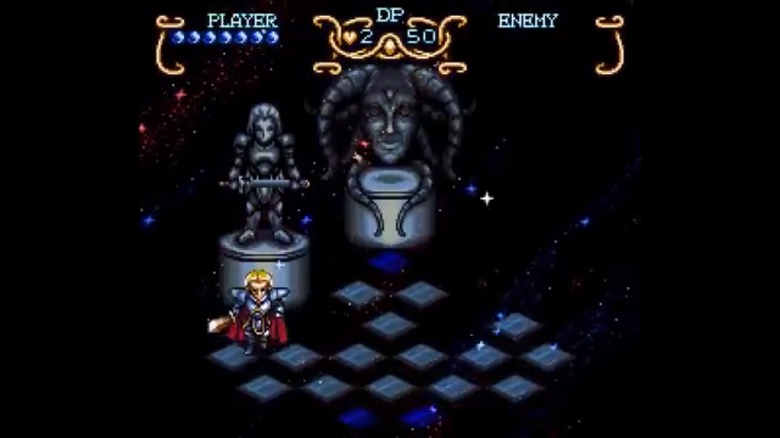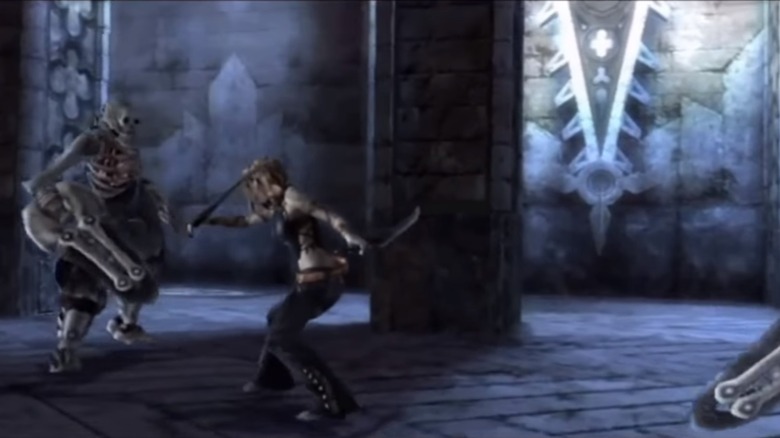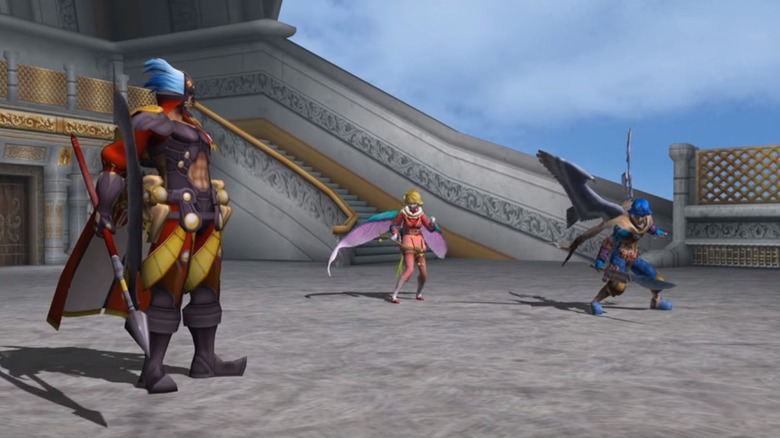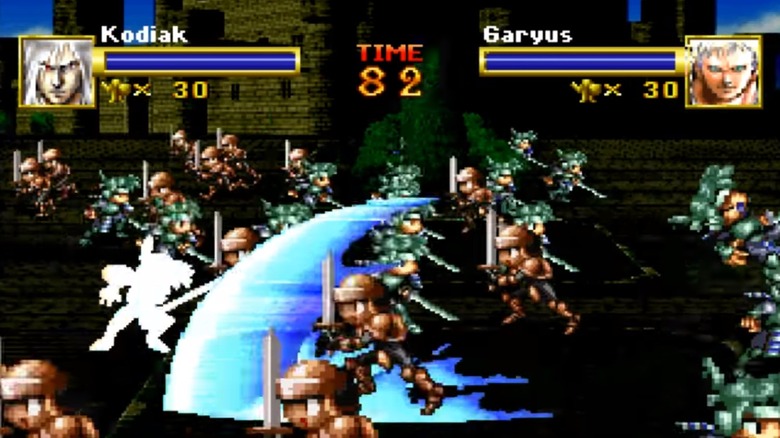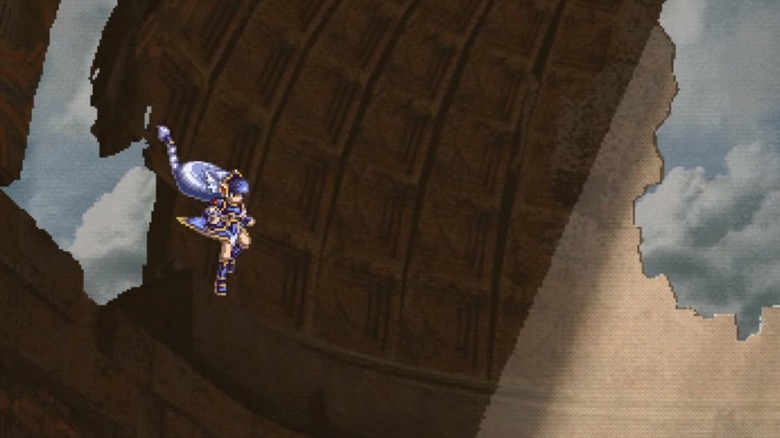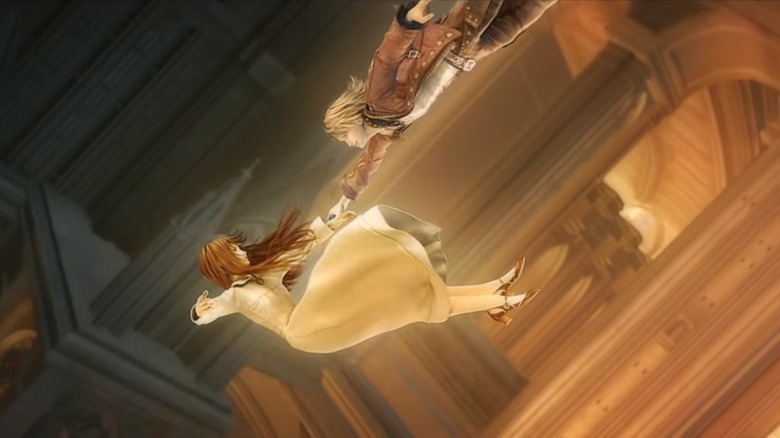The Best RPGs You've Never Played
If you like some story with your combat, there's nothing like a good RPG. The detailed settings and interactive plotlines open up new worlds and concepts while the rich visuals and musical scores transport you from the dreariness of everyday life. All from the comfort of your home.
Of course, not all RPGs are created equal. The genre has seen its fair share of triumphs and disasters. Yet, many games do not attract the attention they deserve. With new games appearing every month, it's easy for a title to sink into the depths of obscurity, especially in the shadow of big-name releases.
If you look closely enough, you'll find hidden gems scattered among the failures. Whether you're a computer or console gamer, there's an RPG out there waiting for you to come along and revitalize it. From epic quests to chilling mysteries, here are the best RPGs you've never played.
Unearth your true nature in The Council
Part episodic adventure, part RPG, The Council was the first title released by French developer Big Bad Wolf. The story takes place in 1793, following Louis de Richet as he searches for his mother on a private island near the coast of England.
During his investigation, Louis rubs elbows with many high-profile individuals, including Napoleon Bonaparte and George Washington. Each guest has their own agendas and secrets, none more so than the island's enigmatic owner, Lord Mortimer.
Louis navigates the treacherous waters of intrigue using the social influence system. By combining skills and items, you attempt to outmaneuver the other guests in charged conversations called confrontations. In this way, The Council gamifies dialogue and manipulation, with confrontations functioning like boss fights.
In Episode One, you choose between three core classes: Diplomat, Occultist, and Detective. While you can put points into any of the 15 character skills, those that fall under your chosen path are cheaper. There are also 44 talents and 20 traits you can unlock as you play, conferring permanent bonuses or negative effects.
The Council's emphasis on player choices sets it apart. A single word out of place can create a ripple effect with branching consequences. Quick thinking and attention to detail win the day as you delve deeper into each of the guests' personalities.
Through stunning graphics, fresh mechanics, and clever storytelling, Big Bad Wolf have set themselves up as the dark horse of the RPG world.
Make the ultimate sacrifice in I Am Setsuna
Released on the PlayStation 4 and PC in 2016 and the Switch in 2017, I Am Setsuna evokes the nostalgia of '90s-era RPGs. The game takes place in a winter-gripped land beset by demons. To appease these demons, the maiden Setsuna is chosen as a sacrifice, a long-standing tradition among her people.
You control Setsuna and her companions as they travel to the Last Lands to complete the sacrifice. When at last they arrive, a being called the Time Judge presents them with an opportunity to break the chain of sacrifices and end the true evil once and for all. Though it saves future generations, this victory comes at great cost.
The party passes through many locations, towns, and dungeons during their pilgrimage. Combat takes place using a time-based battle system, much like the Final Fantasy series. Equipping Spritnite crystals grants passive bonuses and attacks; there is also a separate Setsuna gauge that fills as you complete actions. Filling the gauge grants a Momentum charge, which you can use for more power boosts.
I Am Setsuna is a tragic tale that centers on the themes of sadness, sacrifice, and loss. The thoughtful writing, sweeping piano score, and beautiful graphics form a strong atmosphere that make you feel invested in the world's survival. Rounding out this feeling is a strong cast of characters with their own motivations and trauma.
If you're looking for an immersive, nostalgic experience, this is the one.
Turn back time in Omensight
Released in May 2018, Omensight is an action-murder mystery set in the same universe as Stories: The Path of Destiny. You assume the role of the Harbinger, a legendary warrior who manifests in times of great peril. Emerging into a land crippled by war, you witness the world's destruction by an evil serpent. You are tasked with investigating the murder of Vera, the Godless-Priestess, an event which appears to have triggered the apocalypse. By reliving the final day over and over, you draw closer to the truth, using your Omensight to create a new timeline.
To forge a new future, you shadow key individuals who played a role in the world's destruction. You can choose one of four main characters to accompany each day, using visions and clues to influence their actions and open new roads of investigation. Alongside the major beats of the story, you'll fight a variety of foes. These enemies grow stronger the closer you get to solving the mystery. Combat is a mixture of magic, time-manipulation, and swordplay that has you dodging poisoned weapons and pillars of fire.
Attacked by forces on both sides of the war, you may find yourself killing the same character you fought alongside in a previous loop. Sometimes, deceiving or killing the leads you sympathize with is necessary to unlock new information.
Saving the world is a grim job but someone has to do it.
Return to the real world in Forgotton Anne
Forgotton Anne manages to take mundane items and infuse them with whimsy and wonder. Released by Square Enix in May 2018, the hand-animated indie platformer is one of those rare games that ticks all the boxes. You play as Anne, a human Enforcer in a magical realm inhabited by creatures made from discarded and forgotten objects. When these Forgotlings rebel, threatening Anne's ability to return to the human world, she embarks on a quest to restore order.
With the ability to manipulate Anima, the essence that powers the Forgotten Lands, you hold the fate of the Forgotlings in your hands. This power presents one of the core conflicts of the game: punishment or mercy. Once you take a Forgotling's Anima, there is no going back.
Forgotton Anne's visuals steal the show, featuring lush cutscenes and detailed environments reminiscent of a Studio Ghibli film. The immersive environment feels like a mashup of dystopian fiction and Edwardian England. This is further complemented by the game's moody score, performed by the Copenhagen Philharmonic Orchestra.
The attention to detail, smooth transitions, and excellent voice acting create an atmosphere you'll want to return to. The straightforward mechanics complement this tone, presenting fun challenges as you progress through the story. All in all, it's a pretty, well-thought out game that isn't quite like anything you've seen before.
Explore the unknown in Illusion of Gaia
Illusion of Gaia is a forgotten gem of the Super Nintendo. Released in North America in 1994, the action adventure takes place on an alternate version of earth, incorporating many real-life sites, including the Great Wall of China and the Incan Ruins. These locations play a key role in unlocking the final area, hidden at the apex of the Tower of Babel.
You play as Will, a young man whose father disappeared during an ill-fated expedition. Though with his father when disaster struck, Will has no memory of what happened or how he returned home. When an evil comet approaches the planet, Gaia, a mysterious being of Dark Space, sends Will on a quest to save his world. Accompanied by his friends, Will retraces his steps back to the Tower of Babel, unlocking new powers as he goes.
Illusion of Gaia uses a straightforward inventory and combat system, allowing the setting and large cast to take center stage. You earn stat bonuses by killing enemies and collecting jewels, which grant more defense, health, and attack power. Though the only playable character, Will has two other forms that become available as the game progresses. By using Dark Spaces scattered throughout the world, you can recover health and switch personas according to the demands of the area.
By far, the best thing about Illusion of Gaia is the story. Filled with twists and turns, it will keep you guessing until the very end.
Reach for the stars in The Last Story
One of the best-looking Wii titles, The Last Story takes place on an island fortress amidst an ongoing war between humanity and the beast-like Gorak. You play as Zael, a sword-for-hire with dreams of knighthood, as he and his squad complete missions. These take you to several locations, including forests, tombs, and volcanic caverns. Building momentum, the game gives you time to form a bond with the main cast. Though they rely on some familiar tropes, the chemistry between the characters is one of The Last Story's greatest strengths. The relationship progression between Zael and noble-born Calista is especially satisfying. Zael and his ragtag group eventually find themselves swept up in a much bigger plot, pushing them towards the evil force threatening the world.
The battle system is where the game shines brightest. Using real-time tactics, you can dive, dodge, attack from cover, and lure unsuspecting NPCs into a trap. It's fast-paced and exhilarating from the beginning and continues to improve as you learn new abilities.
With the addition of online multiplayer, The Last Story is a versatile, no-fluff, cinematic action game that will leave you wanting more.
Take flight in Baten Kaitos: Eternal Wings and the Lost Ocean
Baten Kaitos: Eternal Wings and the Lost Ocean is a near-perfect intersection of setting, story, and mechanics. Unlike most JRPGs, you play an unseen guardian spirit, guiding the protagonist and his companions through their misadventures. The characters even ask you questions occasionally, allowing you to strengthen your bond with them.
The game takes place on a cluster of floating continents, created in ancient times after the evil god Malpercio made the original planet uninhabitable. In the millennia that followed, mankind adapted to their life in the sky, growing wings that allow for limited flight. In this mobile society, one-winged Kalas is an outcast, despite his mechanical replacement. While seeking revenge for the death of his family, he encounters a woman named Xelha. After accidentally loosening the seal keeping Malpercio trapped, the pair embark on a quest to stop the Alfard Empire from releasing the deity.
The game's mechanics center on Magnus, magical cards that absorb and store the essence of real-world objects. Even contained, the items continue to age in real-time; fruit rots and milk curdles, altering the cards' effects.
You can use these cards for a variety of purposes, such as food, medicine, weapons, armor, and special battle moves. Each party member has their own deck, drawn from at random during combat. The higher the card's spirit number, the more effective it is.
This unique combat system, paired with a compelling plot, storybook-like visuals, and Motoi Sakuraba's masterful score create a truly immersive experience.
Fight for dominion in Dragon Force
This real-time strategy- and tactics-based RPG released on the Sega Saturn way back in 1996. The game takes place in Legendra, a once-prosperous world threatened by the return of the evil god, Madruk. Three hundred years prior, the dragon Harsgalt and his band of warriors failed to defeat the deity, with all but their leader falling in battle. Harsgalt sealed Madruk away, awaiting the day a new Dragon Force would rise to finish the task.
At the start of the game, you choose one of eight rulers to play as. These rulers command generals and their armies, which can travel to different locations, engaging enemy nations in battle. Each ruler has their own campaign, complete with unique a unique story, ending, and cut scenes.
Eventually, the rulers realize servants of Madruk manipulated them into fighting one another. Putting aside their differences, they claim Harsgalt's power, form the new Dragon Force, and set out to defeat Madruk once and for all.
Beyond impressive character progressions, Dragon Force's big draw is its combat system. During battle, up to 200 soldiers take the field at a time, resulting in some epic showdowns. You have an array of special attacks and commands to choose from, with skirmishes lasting until one side retreats or runs out of hit points. You can even try to negotiate before the battle begins.
Your path in Dragon Force depends on the choices you make, making each play through a unique experience.
Stop Ragnarok in Valkyrie Profile
Norse mythology fans will enjoy Valkyrie Profile. Released for PlayStation in 2000, Square Enix resurrected the game for mobile in May 2018. The story follows Lenneth the Valkyrie as she recruits the souls of fallen heroes in preparation for Ragnarok. Lenneth calls upon her companions (einherjar) in battle, using these encounters and other quests as part of their training. The game has three difficulty modes, which determine the number of periods within each of the eight chapters. During her journey, Lenneth learns about her life before becoming a Valkyrie. You also get to know the einherjar through dramatic death scenes and their conversations with the gods in Valhalla.
Valkyrie Profile uses a turn-based combat system where each of your party members is assigned a button on the controller. Pressing the corresponding button on your turn orders the associated character to attack. All the einherjar have a Hero Value, representing their strength of body and character. At the start of each chapter, Lenneth must send at least one einherjar to Valhalla to satisfy Odin and Freya. If you send weak einherjar and keep too much loot for yourself, you will eventually fail their evaluation, triggering the worst of three possible endings.
Valkyrie Profile is a high-stakes tale of duty, love, and sacrifice. Complimented by a fantastic soundtrack and surprisingly decent aesthetics, the game will keep you invested to the end of the world and beyond.
Rise above your station in Resonance of Fate
First released in 2010 on the PlayStation 3 and Xbox 360, Resonance of Fate received a 4K facelift in October 2018. Re-released worldwide on PC and PlayStation 4, the game features updated graphics that make this steampunk RPG even more of a joy to play.
When atmospheric pollution almost destroys the world, the remaining humans band together and create the purification system Basel. Civilization flourishes around Basel's central tower, monitored by Zenith, its mechanical core. To further ensure their survival, Zenith ties humans to quartz stones, which makes them immune to pollution. This sounds like a sweet deal, until you discover Zenith uses these stones to predetermine a person's social status and lifespan.
The game's three main characters, each an anomaly in their own way, band together to form a mercenary group. While completing odd jobs, they stumble upon a plan to subvert Zenith's rule, to which they are, inexplicably, tied.
Resonance of Fate uses a quick-paced, tri-Attack battle system, centered on different firearms and combination moves. Part real-time, part turn-based, you can move around and perform actions determined by your total action points. An essential battle element, Bezel shards can be collected throughout the world, which fuel special maneuvers called Hero Actions and safeguard the characters from direct damage. However, Bezels shatter after deflecting too much. If they're all destroyed, the characters enter critical mode, leaving them vulnerable and unable to use Hero Actions.
The unique combat system, character development, and cinematography make Resonance of Fate a showstopper.

